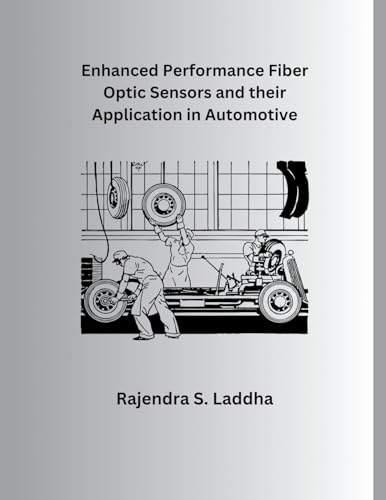Items related to Enhanced Performance Fiber Optic Sensors and their...

- PublisherMOHAMMED ABDUL SATTAR
- Publication date2024
- ISBN 13 9798224185849
- BindingPaperback
- Number of pages158
Top Search Results from the AbeBooks Marketplace
Enhanced Performance Fiber Optic Sensors and their Application in Automotive (Paperback)
Book Description Paperback. Condition: new. Paperback. Today's vehicle uses the number of sensors and actuators to govern its functioning. The key role of sensors is to assure engine efficiency, comfortable driving experience, passenger and vehicle safety, and reduce fuel consumptions and harmful emissions. Sensors are an integral part of a vehicle, designed to detect, transmit, record, analyze and display vehicle performance information of the external and internal environment. Key factors for increased use of sensors in automobile are demand for performance, vehicle personalization and legislation. There are three categories of the sensors depending on the location in automobile viz. powertrain, body, and chassis. The important role of sensors in an automobile is to perform efficient engine management, Brake/traction control, Collision avoidance, Comfort/convenience, HVAC, Navigation, Safety, Smart cruise control, Suspension, Testing, and Vehicle security. The number of sensors developed with various technologies used in the automobile. Development of new applications using nano and micro technology is helping to grow the automotive sensor market. The invention of new sensors and sensing materials, existing sensors performance improvement due to continuous research, and technological advancements in the sensor industry opened up new avenues for sensor applications. Due to unique characteristics, fiber optics is an ideal choice for communication, sensing and lighting requirements. Communication and sensing are of utmost importance due to continual increase in onboard safety devices. Since its early beginnings in the 1970s, fiber-optic sensor (FOS) technology has experienced tremendous growth. Fiber-optic sensors (FOSs) are used to measure quantities like displacements, rotations, pressure, vibrations, temperature, or concentration of chemical species. FOSs offer a set of advantages over traditional electronic sensors such as increased sensitivity and design diversity. These sensors perform real-time measurement with negligible hysteresis because light propagation is highly sensitive to perturbations. Fiber-optic (FO) sensor technology offers the possibility of non-contact measurement. The quality improvement due to continuous research and reduction in component prices have made FO sensors possible to compete and replace conventional sensors. Shipping may be from multiple locations in the US or from the UK, depending on stock availability. Seller Inventory # 9798224185849
Enhanced Performance Fiber Optic Sensors and their Application in Automotive (Paperback)
Book Description Paperback. Condition: new. Paperback. Today's vehicle uses the number of sensors and actuators to govern its functioning. The key role of sensors is to assure engine efficiency, comfortable driving experience, passenger and vehicle safety, and reduce fuel consumptions and harmful emissions. Sensors are an integral part of a vehicle, designed to detect, transmit, record, analyze and display vehicle performance information of the external and internal environment. Key factors for increased use of sensors in automobile are demand for performance, vehicle personalization and legislation. There are three categories of the sensors depending on the location in automobile viz. powertrain, body, and chassis. The important role of sensors in an automobile is to perform efficient engine management, Brake/traction control, Collision avoidance, Comfort/convenience, HVAC, Navigation, Safety, Smart cruise control, Suspension, Testing, and Vehicle security. The number of sensors developed with various technologies used in the automobile. Development of new applications using nano and micro technology is helping to grow the automotive sensor market. The invention of new sensors and sensing materials, existing sensors performance improvement due to continuous research, and technological advancements in the sensor industry opened up new avenues for sensor applications. Due to unique characteristics, fiber optics is an ideal choice for communication, sensing and lighting requirements. Communication and sensing are of utmost importance due to continual increase in onboard safety devices. Since its early beginnings in the 1970s, fiber-optic sensor (FOS) technology has experienced tremendous growth. Fiber-optic sensors (FOSs) are used to measure quantities like displacements, rotations, pressure, vibrations, temperature, or concentration of chemical species. FOSs offer a set of advantages over traditional electronic sensors such as increased sensitivity and design diversity. These sensors perform real-time measurement with negligible hysteresis because light propagation is highly sensitive to perturbations. Fiber-optic (FO) sensor technology offers the possibility of non-contact measurement. The quality improvement due to continuous research and reduction in component prices have made FO sensors possible to compete and replace conventional sensors. Shipping may be from our Sydney, NSW warehouse or from our UK or US warehouse, depending on stock availability. Seller Inventory # 9798224185849

